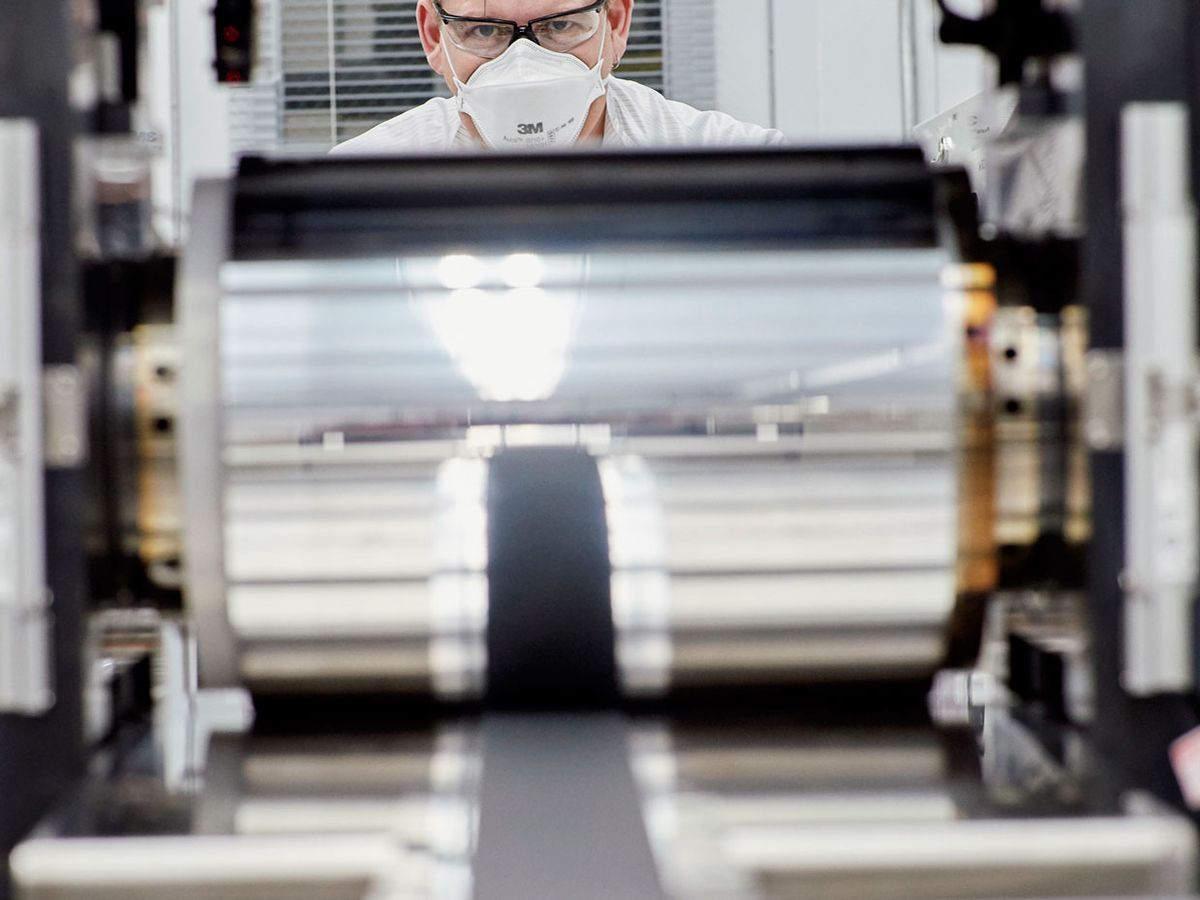A rapid-charging and non-flammable battery developed in part by 2019 Nobel Prize winner John Goodenough has been licensed for development by the Canadian electric utility Hydro-Québec. The utility says it hopes to have the technology ready for one or more commercial partners in two years.
Hydro-Québec, according to Karim Zaghib, general director of the utility’s Center of Excellence in Transportation Electrification and Energy Storage, has been commercializing patents with Goodenough’s parent institution, the University of Texas at Austin, for the past 25 years.
As Spectrum reported in 2017, Goodenough and Maria Helena Braga, professor of engineering at the University of Porto in Portugal, developed a solid-state lithium rechargeable that used a glass doped with alkali metals as the battery’s electrolyte. (The electrolyte is the material between cathode and anode and is often a liquid in today’s batteries, which typically means it’s also flammable and potentially vulnerable to battery fires.)
Braga said her and Goodenough’s battery is high capacity, charges in “minutes rather than hours,” performs well in both hot and cold weather, and that its solid-state electrolyte is not flammable.
“For the next two years we do research and development in order to prove the concept and to scale the materials,” Zaghib said.
Hydro-Québec’s research lab, which Zaghib says comprises 120 people, works with both early-stage technologies like the Goodenough glass battery and also with technologies already at commercial scale.
This latter category includes another Goodenough invention, the lithium iron phosphate battery.
“This is one of the safest materials for lithium ion today,” Zaghib said. “It’s used for electric buses and for energy storage.”
Beginning in 1996, Zaghib says, Goodenough and Hydro-Québec struck up a partnership to commercialize this lithium battery. Licensees of this technology include the now Chinese-owned A123 and the Japanese battery company Murata Manufacturing.

Zaghib says that although the utility has been researching lithium batteries since 1967, it’s currently concentrating only on solid-state batteries. The Goodenough/Braga glass battery is what Zaghib calls a “third-generation” solid-state battery.
Hydro-Québec does have a so-called “first-generation” solid-state battery already in the marketplace, Zaghib said.
“Blue Solutions is a French company using our lithium polymer license … for electric buses and energy storage,” he said.
The utility’s first-generation lithium battery dates back, Zaghib said, to more than 40 years ago. “Hydro-Québec was the first company to work on true lithium batteries in 1979,” he said.
The utility recently announced that it’s working with Daimler Benz to develop a second-generation lithium solid-state battery.

“The transformation from Li-ion to solid-state batteries is not going to happen overnight,” Zaghib said in a recent conversation with Andreas Hintennach, senior manager battery research at Mercedes-Benz AG. “Note that for solid-state batteries, both the electrode and electrolyte types are made of a solid material. New generations of these materials will be quick to charge and are basically non-flammable.”
Which leads back to Goodenough and Braga’s battery, Hydro-Québec’s “Gen 3.”
“It can be glass or ceramic, but it is not a [lithium] polymer,” Zaghib said of the Goodenough/Braga battery’s electrolyte. “So with Daimler, it’s an organic compound, and with John Goodenough, it’s an inorganic compound. The inorganic compound has higher ionic conductivity compared to the polymer.” That means the ions shuttle back and forth more readily between cathode and anode, which could potentially improve a battery’s capacity, charging speed, or other performance metrics.
“The price is coming down,” Zaghib said of traditional (and flammable) liquid electrolyte lithium batteries. “But safety is a big problem for liquid electrolytes.”
Margo Anderson is the news manager at IEEE Spectrum. She has a bachelor’s degree in physics and a master’s degree in astrophysics.



